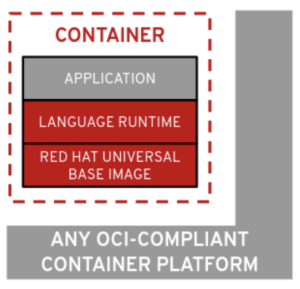RHEL 8 Aimed at Hybrid Cloud Deployments

via Shutterstock
The Linux operating system continues to evolve as more enterprise users shift their IT operations to hybrid and multiple cloud deployments while seeking a single OS capable of handling a variety of workloads.
That’s the pitch made by Red Hat (NYSE: RHT), which this week announced general availability of the eighth edition of its flagship enterprise Linux OS distribution. RHEL 8 joins a growing list of IT infrastructure intended to handle micro-services and other workloads running in enterprise datacenters as well as multiple public clouds.
The goal is to allow applications to run on legacy as well as hyperconverged infrastructure.
Red Hat also this week launched “universal” application container images as it seeks to ease management of emerging micro-services.
As more applications shift to the cloud and an increasing number of cloud-native applications are deployed, Red Hat said Tuesday (May 7) the latest version of its Linux OS reflects the reality that “the operating system must evolve as well.”
Hence, the soon-to-be-IBM unit is positioning its distribution of the foundational Linux kernel as “Intelligent Linux,” aimed squarely at hybrid cloud deployments. That label refers to built-in features that help deploy and monitor Linux-based productions systems like OpenShift, Red Hat’s container platform that has in the past proven difficult to deploy.
RHEL 8’s new smart management features designed to handle applications running on everything from bare-metal servers to Linux containers in private and public clouds include a suite of tools built around its Satellite infrastructure management tool and new application container images.
Satellite manages on-premises systems along with cloud services for distributed RHEL deployments. It is now being extended to help managed hybrid cloud deployments.
In tandem with this week’s release of RHEL 8, Red Hat also unveiled industry standard container images designed to boost the stability and security of Linux-based containers. The container tool dubbed Universal Base Image complies with Open Container Initiative specs.
It is promoted as allowing developers with or without a RHEL subscription to build containerize applications that can run on most platforms while adding support for the OpenShift Platform Container.
“This means you can build a containerized application on [Universal Base Image], push it to a container registry server of your choosing, and share it,” Red Hat noted in a blog post.
The updated version of RHEL also addresses heightened concerns about container security, including a recent Kubernetes vulnerability that spread to OpenShift. Red Hat said RHEL 8 includes support for a pair of data encryption standards. Those security measures aimed at hardening the Kubernetes cluster orchestrator and other emerging cloud-native components would allow users “to adopt production-ready innovation by deploying only the necessary packages for specific workloads,” the company added.
“This enhances the adoption of emerging technologies while helping to minimize potential risk.”
Related
George Leopold has written about science and technology for more than 30 years, focusing on electronics and aerospace technology. He previously served as executive editor of Electronic Engineering Times. Leopold is the author of "Calculated Risk: The Supersonic Life and Times of Gus Grissom" (Purdue University Press, 2016).











